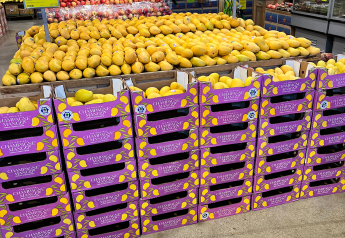CDC: Small children aren't eating vegetables (Me: No kidding!)

Our children aren’t getting the nutrition they need — from fresh produce or otherwise.
Almost half of U.S. children ages 1 to 5 do not eat a single vegetable in a day, according to a study released Feb. 17 from the Centers for Disease Control and Prevention.
I have to say, I am not shocked one bit, based on our family’s dinnertime experience with our 3-year-old. The repeated response by this test subject in my at-home scientific trials with spinach, kale, arugula, summer squash, peppers, gourds and green beans: “Yuck!”
The CDC study, led by researchers including Heather C. Hamner, analyzed the dietary patterns of these young children using parent survey data from the 2021 National Survey on Children's Health.
Results showed:
- 32% of children did not eat a daily fruit.
- 49% did not eat a daily vegetable.
- 57% consumed at least one sugary drink during the preceding week.
The study does well to note disparities by geography, race, ethnicity and income. In 20 states, more than half of children did not eat a vegetable daily during the preceding week, with the highest percentages among Black children and those living in food-insecure households.
Louisiana’s children seem to fare the worst, where 64% consumed a vegetable “less than daily” in the preceding week, according to CDC results.
Fruit doesn’t do as badly, also unsurprisingly, based on my own experience.
Now what?
I scoured this report for solutions. There were some, and they are doozies.
- USDA’s Special Supplemental Nutrition Program for Women, Infants, and Children, or WIC, a program for low-income families, provides nutrition education, supplemental foods — including fruits and vegetables — and referrals to health care services. “WIC is an important conduit for reaching participating families with nutrition education messages and healthy supplemental foods.”
- Nutrition standards in early care and education systems, or ECE, and in the charitable food system can support access to fruits and vegetables and help limit the intake of foods and beverages with added sugars. CDC supports system-level efforts, including standards in the ECE state licensing regulations that support healthy eating, professional development opportunities for ECE staff members, and programs that provide young children an opportunity to learn about food, agriculture and gardening through hands-on experiences.
- Federally funded programs, such as produce voucher programs and the Child and Adult Care Food Program, have resulted in serving more nutritious foods to children.
These at least partial solutions represent a system-level approach that can improve diet quality for young children.
“The effectiveness of federal, state or local-level programs could be enhanced by education emphasizing the importance of daily fruit and vegetable consumption and reducing sugar-sweetened beverage intake across multiple settings,” the study said.
Educational solutions:
- Home visiting programs.
- Healthy Start.
- USDA’s Supplemental Nutrition Assistance Program Education.
- Health care providers can also convey the importance of healthy dietary choices through anticipatory guidance and regular screening and counseling on food and nutrition security and key dietary behaviors during health care encounters.
“Understanding how access, affordability and taste preferences influence diet for young children could help tailor programmatic, communication and education efforts,” the study said.
Money
Based on my past and current research, I believe the culprits to the sobering findings in this recent study have to do with money: Those who don’t have much of it.
Also, there’s physical access to fresh produce, which also has to do with money. If you don’t have a car or good public transportation, you might only be able to shop at the closest corner store or gas station.
And time is another factor, which is also related to money. (Isn’t everything?) If you’re working two or three jobs to make ends meet, or you can’t afford or find childcare, or you work the graveyard shift, or you’re a single parent — who has the time?
Compared to these struggles, my child lucks out by being born in a relatively advantageous position for a multitude of a reasons. So then, what’s my excuse?
Feeding threenagers
He’s 3.
It's not access. We have tons of fresh produce at home on the regular, and the adults here are always eating it. It's taste preference.
The study itself notes how different ages of children do better.
“Children aged 1 year were more likely than were older children to eat either a daily fruit or a daily vegetable during the preceding week and were less likely to drink a sugar-sweetened beverage,” the study said.
I’ve written about this before, though, citing other research with a certain smugness that my 1-year-old baby lapped up the kale-swirled mashed potatoes and gobbled the peppers in his omelets. Oh, those were the days.
Related news: When a baby's window for liking kale closes
Apparently, this 3-year-old child’s mind-blowingly picky eating habits are standard issue, according to research.
My December 2020 article gave warning: “Child nutrition researchers discovered that babies 6-12 months old are the most receptive to new foods, including bitter foods like kale. But after 1 year, babies are less likely to eat the kale, and from 2 to 5, children experience a 'neophobia' of the palate or unwillingness to try new foods.”
Neophobia is rampant in this test case. My solution is to blend leafy greens into smoothies, hide it other ways, attempt to repeat his exposure without instigating a meltdown at the dinner table and … to just sometimes give up.
This super-opinionated child still eats (sometimes, depending on mood) broccoli, cauliflower, carrots, corn, peas and sweet potatoes. That’s something.
And he eats allllll the fruits. I mean, why not? It’s sweet.







